Travels with Grace: Merano
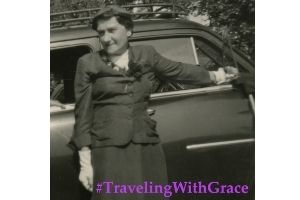
Welcome to this week’s segment of our 2019 #TravelTuesday series: Traveling with Grace. Today Grace spends some time in the Tyrol region of northern Italy during the summer of 1929.
July 28, 1929
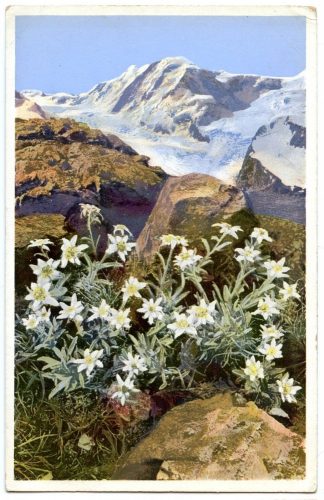
Sunday. We leave St. Moritz in brilliant sunshine at 9:45 a.m. and travel for one hour on the little electric railway as far as Zernez making frequent stops en route. The proprietor gave mother and me each a box of fine chocolates on leaving. At the latter place we board a motor diligence, run by the government and ride over the Ofenpass, through the National park, a virgin and rugged territory where habitations are rare. At noon we stop for an hour at the first hotel, Il Fuorn. Then continuing our journey, we enjoy many lovely mountain vistas, look down into deep gorges through which rapid streams flow, the lower slopes are aglow with a variety of wildflowers, never have I seen such big daisies both yellow and white. Once we stop at a little inn to deliver some mail, for this is a post-diligence, and the proprietress gives us a lovely bunch of edelweiss which now decorates my hat.
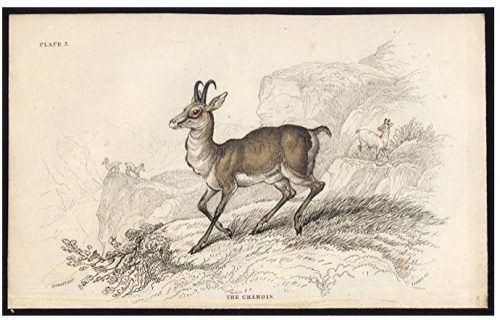
In the shallow bed of a river we see some chamoix which have come down to drink as the sun is unusually hot today. When we reach the top of the pass – over 2000 meters high – we look out over the high peaks and see the snowy crest of the Ortler in the distance, the big, best and whitest of all, 3902 meters. We stop at the little villages of Cierfs, Fuldera, Valcava, and Santa Maria, all seem so remote and ancient, the diligence being the only link to connect them with the outer world. At Munster we change into another car and begin to descend into the Tyrol region of Italy. Gradually the character of the mountains changes. They grow less steep and rugged, more verdant and intensely cultivated. Vineyards appear on the slops and little squares of yellow and light green stand out as though illuminated against the dark background of trees. At 5 p.m. we arrive in Merano and locate at the beautiful Palace Hotel – palatially furnished – where the balconies of our rooms open on a lovely park. Adjoining is an old castle.
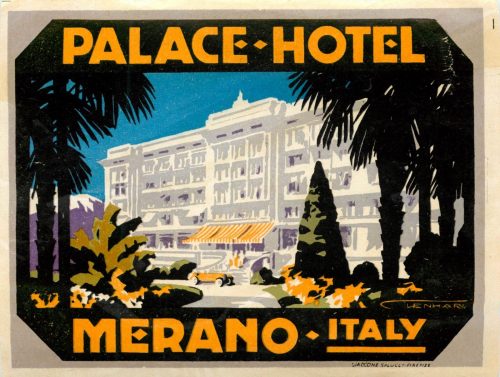
July 29, 1929
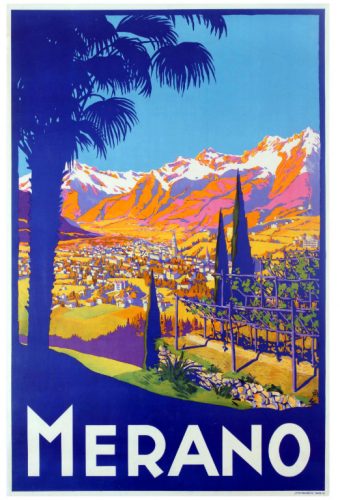
Monday. We take a carriage this afternoon and ride through the old town, very quant and interesting, the shops fronted by a low-ceilinged arcade with painted gothic arches, stenciled and painted roofs bearing the various trademarks of the shop keepers. The streets are narrow and winding and at the intersection one looks out to the mountains which hem in the town on all sides. We ride up through the newer portions of the town where there are many picturesque and even elegant villas and pensions laid out in charming gardens. Vineyards abound everywhere and there are many pear and apple trees. Merano has a fine Kurhaus, numerous parks and promenades for the public, a pretty theater. We ride out through Ober – and Unter-Maria all very quaint and Teutonic looking. The signs are always printed in Italian but most of the names are German and one can easily distinguish the German from the Italian merchandise in the shops. We see several old castles, abandoned and partly in ruins, perched high I the hills.
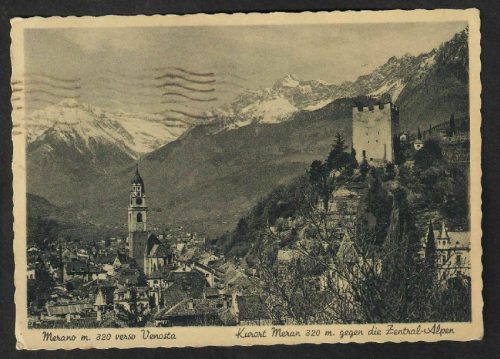
Tonight, we go across the street to the little Plankestein Kino to see the movie “Casanova,” very fine indeed. It is my first experience in a European movie theater. Of course, this is a very small one. The only music is furnished by a pianist who does very well. A man comes around twice to squirt perfume through a gun. The film is divided into seven or eight parts and there is a short intermission between each, while a bell is run before it starts and before it ends. But it is a pity to see the German captions relegated to a sort of screen on the side where it is difficult to read them. Also they are written in a miserable script, while the Italian is nicely printed and holds the center of the stage. I have spoken to quite a few of the old residents here and they express a hatred of the Italian rule and claim that the town is much less prosperous than of yore.
July 30, 1929
Our driver gives us a ride all around the valley this afternoon through the towns of Burgstall, Lana, Cermes, and Marlengo. The river Etch intersects this country which appears very fertile and covered with fruit orchards. Also there is a large fruit packing house which ships the products abroad. The towns however do not present an air of prosperity.
July 31, 1929
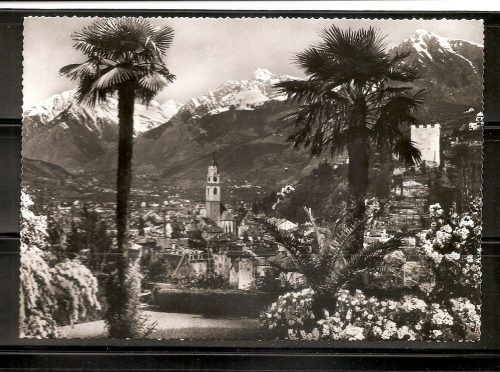
Today we go up the Fragsburg, a most picturesque ride climbing a spiral road to the top of one of the lesser mountains. At every turn a beautiful picture of the valley is enjoyed, framed in the opening of the trees. It is refreshingly cool riding through the woods bathed in the spicy fragrances of pines and watered by an occasional mountain stream tinkling merrily in its descent. Below us the town of Merano is seen in its entirety, encompassed by hills and the river shines like a broad ribbon of silver. The vineyards propped on their rustic stilts give the illusion of a vast green stadium when viewed from above. We see the suspended car of the aerial railway pass above our heads. There are two in the vicinity and they run every hour. Mother is doing her best to discourage father and me from trying one. At the summit of the Fragsburg we take tea at the Terrace Café which affords another wonderful panorama of the valley. The German people who run it are so kind and show us the rooms furnished with antiques. Nearby is an old castle.
August 1, 1929
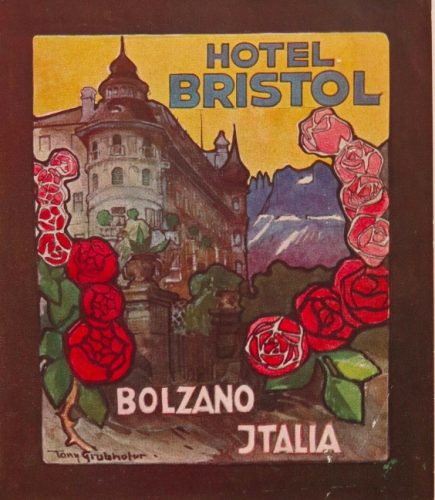
Merano is another place which will go down in our “red-letter book of memories.” We leave amidst the warm farewell of the entire staff at 10 a.m. and arrive an hour later at the Bristol Hotel in Bolzano. The train ride was short and sweet. We follow the Adige for most of the way, the mountains on either side liberally sprinkled with old castles in varying degrees of decay usually situated on a crest overlooking a small hamlet where the overlord of the district was wont to hold sway. Also, there are occasional old forts, with look-out towers, bastions, etc. to strengthen the ancient hold. In the valleys between the ranges the fruit trees are quickly maturing toward the harvest. One often sees large leaved cabbages growing around the base of an apple or pear tree and grape vines are everywhere.
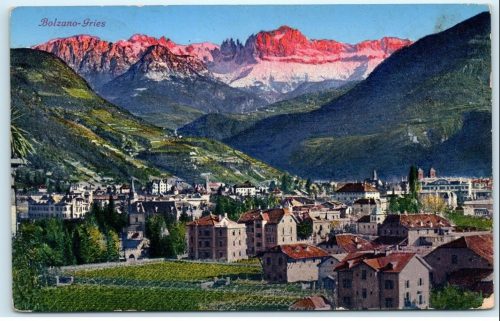
This afternoon we take a carriage around Bolzano, which resembles Merano in many ways, its setting, architecture, arbor culture, etc. There is a fine monument with fasciti design, to Victor Emanuel III, a pretty municipal park, promenade paralleling the river, theaters, casino, etc. In the principal square is a pretty church with sloping roof of colored tiles, a monument to the bard Walter von der Vogelweide. We ride through Fries, a town of villas and pensions, formerly a separate community but no incorporated with Bolzano. Here come many visitors in autumn to take the wine or grape cure and in the winter, there are the popular winter sports. We ride out through the country lanes sweet with hay, bordered with vines and fruit trees, and catch fascinating glimpses of the Dolomites and the sunset over the Catinaccio or Rosengarten.
August 2, 1929
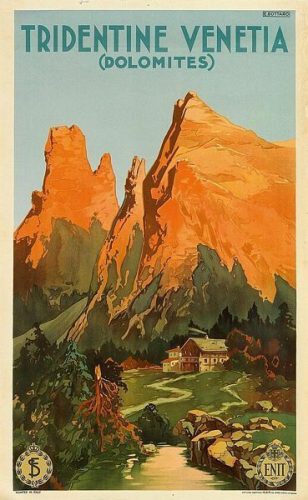
Friday. In spite of a steady rain we start out at 9:15 a.m. in a private auto for a tour of the Dolomites. Our route starts out along the stupendous gorge of the Eggenthal, looking positively eerie through the veil of slanting rain, Nova Levante, Carezza, Karersee – a deep blue-green in its hollow of pines – Passo di Costalunga, big o di Fassa, Campitello, Canezei, Pordoi pass – 2250 meters high – Arabba, Piece di Lirinaflanga, Passo di Falsarrego – 2117 m. high – Costina d’Ampezzo, Lake of Misurina, Carbonin, Dobbiaco, Brunico, and Chiusa di Bressamone, the oldest town in Tyrol. The way is dotted with resorts more or less pretentious and good hotels are not infrequent. We have lunch at a modest one high in the mountains. The road is often a mass of serpentine curves and we several times encounter snow in our track. The views of the mountains are somewhat spoiled by the rain and heavy mists which float like clouds over the crests, but it gives the advantage of a dustless journey and everything looks so clean and green. At the inn where we lunch is a dead chamoix shot this morning, which they have fixed up in a natural position which at first fooled me into thinking it alive. Many people are out hiking and riding in spite of the unfavorable weather. It is really quite cold. Returned to hotel at 7 p.m.
August 3, 1929
Saturday. Sat in the park today and enjoyed the local color. Talked with some of the natives and all express the same feeling of unrest and discomfort with the present form of government. Even the children, whom we watch play, have serious, thoughtful faces. They use the German language in their games, but their elders regret that it cannot be taught in the schools. We have dinner in the garden restaurant across from the hotel, this being the first hotel of our acquaintance where meals are not served on the premises.
Thanks for reading “Traveling with Grace,” a series where we’re sharing (and annotating) posts from the travel diaries of Grace Amelia Hecht, native Baltimorean, b. 1897 and d. 1955. As mentioned in my introductory post transcription errors sometimes occur and I’ve made my best guesses where possible, denoted by [brackets]. – Rachel Kassman, marketing manager
